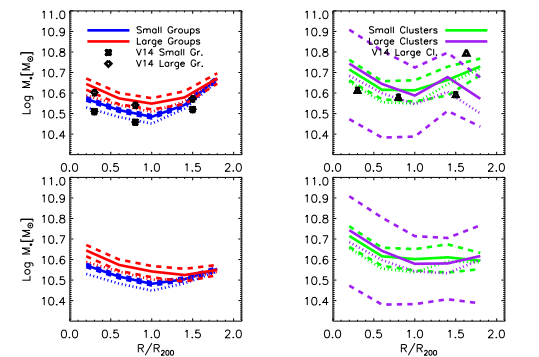It is observationally found that there is a mass segregation in galaxy groups that galaxies close to the group center are slightly larger than those staying at the outer region of the group. It is speculated that dynamical friction, a drag-force due to the interaction between a satellite galaxy and the host dark matter halo, is the main driver of the mass segregation phenomenon. For the first time, scientists in Purple Mountain Observatory (Emanuele Contini , Xi Kang) use N-body simulation, combined with a semi-analytical model for galaxy formation, to study the mass segregation in galaxy groups and galaxy clusters. In agreement with the observations, we found that the model galaxies also display mass segregation in our simulation. We found that the main driver of it is the dark matter mass of the galaxy at its time of accretion. We also found that in galaxy clusters, the mass segregation is less prominent, also in consistent with the data (See the attached Fig.1). However, we find that there is an upturn of the average galaxy stellar mass beyond the virial radius of the group which is in conflict with the data. We conclude that future observations of galaxies beyond the virial radius of the groups is curtail to test our model. 
By with KANG Xi Fig. 1 The mass segregation in galaxy groups and galaxy clusters in the model. It is found that the average stellar mass of galaxies in inner group is slightly larger than those in the outer region. The model galaxies also display an upturn of average stellar mass beyond the virial radius of the groups. Our work is published as a letter to the Monthly Notices of the Royal Astronomical Society (MNRAS, 2015, 543, L53) http://mnrasl.oxfordjournals.org/content/453/1/L53.full.pdf+html, and it is partial supported by the National Science Foundation of Jiangsu (No.BK20140050), NSFC (No.11333008), the 973 program (No. 2015CB857003, 2013CB834900) and the Strategic Priority Research Program the emergence of cosmological structure of the CAS (No.XDB09000000). Emanuele Contini is also supported by the Chinese Academy of Sciences Presidents’ International Fellowship Initiative Grant (No.2015PM054). |
